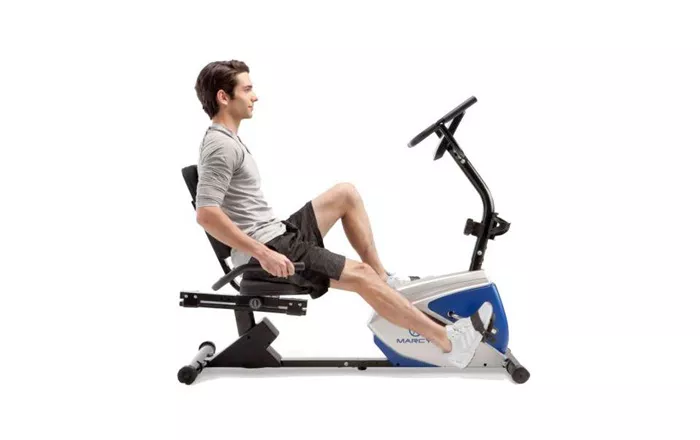When it comes to losing weight, exercise is a key component. Among the various types of exercise equipment available, recumbent exercise bikes have gained popularity. But is a recumbent exercise bike good for weight loss? In this article, we will explore the benefits, drawbacks, and effectiveness of using a recumbent exercise bike for weight loss.
What is a Recumbent Exercise Bike?
Definition and Design
A recumbent exercise bike is a type of stationary bike that allows the user to sit in a reclined position. The seat is larger and more comfortable than that of an upright bike, and it often comes with a backrest. The pedals are positioned in front of the user, rather than below, which reduces strain on the knees and lower back.
How It Works
The mechanics of a recumbent bike are similar to those of a traditional upright bike. You pedal to move the flywheel, which provides resistance. The resistance can be adjusted to make the workout easier or more challenging. Most recumbent bikes come with a console that displays metrics such as speed, distance, time, and calories burned.
Benefits of Using a Recumbent Exercise Bike for Weight Loss
Low-Impact Exercise
One of the main advantages of a recumbent bike is that it provides a low-impact workout. This means it is easier on your joints compared to high-impact exercises like running. For individuals with joint issues or those who are overweight, a recumbent bike can be a safer option.
Comfort and Support
The reclined position and backrest offer excellent support, making it easier to maintain proper posture. This can be particularly beneficial for people who have back problems or find it uncomfortable to sit on a traditional bike seat for extended periods.
Calorie Burn
While the calorie burn on a recumbent bike may be slightly lower than on an upright bike, it is still an effective way to burn calories. The exact number of calories burned depends on factors like your weight, the intensity of your workout, and the duration.
Cardiovascular Health
Using a recumbent bike can improve your cardiovascular health. Regular use can help lower blood pressure, improve circulation, and increase lung capacity. These benefits contribute to overall health and can aid in weight loss.
Muscle Engagement
Although a recumbent bike primarily targets the lower body, it also engages the core muscles to some extent. This can help tone your legs, glutes, and abdominal muscles over time.
Drawbacks of Using a Recumbent Exercise Bike for Weight Loss
Limited Upper Body Engagement
One of the main drawbacks of a recumbent bike is that it does not engage the upper body as much as other forms of exercise. This means you may need to incorporate additional exercises to target your arms, shoulders, and back.
Lower Calorie Burn Compared to Upright Bikes
As mentioned earlier, the calorie burn on a recumbent bike is generally lower than on an upright bike. If your primary goal is to burn as many calories as possible, you might find an upright bike more effective.
Space Requirements
Recumbent bikes are generally larger and take up more space than upright bikes. If you have limited space at home, this could be a consideration.
Effectiveness for Weight Loss
Consistency is Key
The effectiveness of any exercise equipment for weight loss depends largely on consistency. Using a recumbent bike regularly, combined with a healthy diet, can lead to weight loss over time. It is important to set realistic goals and stick to a routine.
Intensity Matters
To maximize weight loss, it is important to vary the intensity of your workouts. Incorporating interval training, where you alternate between high and low resistance, can help increase calorie burn and improve cardiovascular fitness.
Combining with Other Exercises
For optimal results, consider combining your recumbent bike workouts with other forms of exercise. Strength training, yoga, and even walking can complement your cycling routine and help you achieve a balanced fitness regimen.
Tips for Using a Recumbent Exercise Bike for Weight Loss
Set Realistic Goals
Start with achievable goals and gradually increase the intensity and duration of your workouts. This will help you stay motivated and avoid burnout.
Monitor Your Progress
Use the console on your recumbent bike to track your progress. Keeping an eye on metrics like calories burned, distance, and time can help you stay on track and make adjustments as needed.
Stay Hydrated
Make sure to drink plenty of water before, during, and after your workout. Staying hydrated is crucial for maintaining energy levels and overall health.
Incorporate Variety
To keep your workouts interesting, try different resistance levels and workout programs. Many recumbent bikes come with pre-set programs that can add variety to your routine.
Listen to Your Body
Pay attention to how your body feels during and after your workouts. If you experience pain or discomfort, adjust your position or resistance level. It is important to avoid overexertion to prevent injury.
Conclusion
So, is a recumbent exercise bike good for weight loss? The answer is yes, but with some caveats. A recumbent bike offers a low-impact, comfortable, and effective way to burn calories and improve cardiovascular health. However, it may not engage the upper body as much as other forms of exercise, and the calorie burn is generally lower than on an upright bike. For optimal results, it is important to use the bike consistently, vary the intensity of your workouts, and combine it with other forms of exercise. By doing so, you can achieve your weight loss goals and improve your overall fitness.
Related topics:
- HOW TO USE AN EXERCISE BIKE FOR WEIGHT LOSS
- HOW EFFECTIVE IS A WORKOUT BIKE?
- WHAT IS RIDING A STATIONARY BIKE GOOD FOR?

